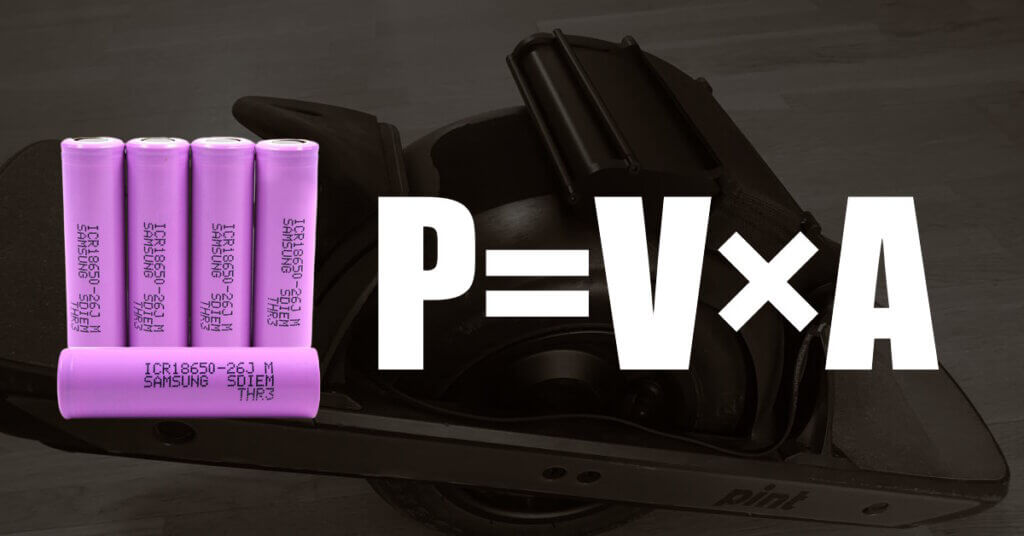When buying a VESC there are a couple of concepts that are good to understand. Power, voltage, and amperage are all important when deciding the best VESC Option for your device. They are important in the micromobility universe when building electric skateboards, scooters, and Onewheel’s you often hear Power limits (W) and battery Voltage and max current limits. Let’s break them down.
When choosing the correct VESC for the job one of the most important things is the needed power (Wattage) for your board or device. When looking at the VESC or ESC it’s therefore important to note the max Amperage (current) and Voltage it´s specified for. Both these will give you the power limits of the controller.
Power
Power (P) refers to the rate at which energy (electricity) is transferred in the device, in a typical VESC from the battery to the motor. It’s measured in watts (W) and can be calculated by multiplying voltage (V in volts) by current (I in amperes). It can also be expressed in terms of joules per second, 1 Watt = 1 Joule per second (1W = 1 J/s).
The more power a motor consumes, the more work it can do or the more energy it can transfer in a given amount of time.
P=V⋅A
P is the electric power in watts (W).
V is the voltage in volts (V).
A is the amperage in amps (A).
Calculation example
The electric scooter motor needs at least 500W of Power
- ESC 12.A Limit
500/12.5 = 40 -> We need a battery that has >= 40V e.g a 12S (44.4V)
- VESC 50A Limit
500/50 = 10 -> We need a battery that has >= 10V e.g a 3S (11.1V)
Voltage
Voltage, on the other hand, refers to the electrical potential difference between two points in a circuit. It is measured in volts (V) and represents the force that drives electric current through a circuit. Voltage can be either positive or negative, and it is typically supplied by a power source such as a battery in your device. The higher the number of cells in series inside the battery, the higher voltage it has.
A common battery type is the lithium-ion battery pack which is composed of 12 cells connected in series (12S). Each individual cell is typically a cylinder lithium-ion cell that has a nominal voltage of 3.7V, giving the entire 12S pack a nominal voltage of 44.4V (3.7V x 12).
Amperage
Amperage, also known as current, refers to the flow of electric charge through a circuit. It is measured in amperes and represents the rate at which electric charge flows to and from the battery to for example a motor. The more amperage a circuit has, the greater the amount of electrical charge flowing through it. As the VESC uses a battery the amperage from it is what’s called direct current (DC), the other type of current is called alternating current (AC).
Conclusion
Overall, power, voltage, and amperage are all important concepts in the world of electricity and are essential for understanding how VESC´s, motors, and other electrical circuits work.
If you connect a too-high voltage battery or have not configured your VESC correctly with the VESC Tool and skipped limiting the max current (Amperage) then it’s a high risk of burning your board. The VESC can be used for so many types of devices that individually need totally different limits and specifications, a quadcopter needs far less voltage and current, and for example the motor in a VESC Onewheel.


